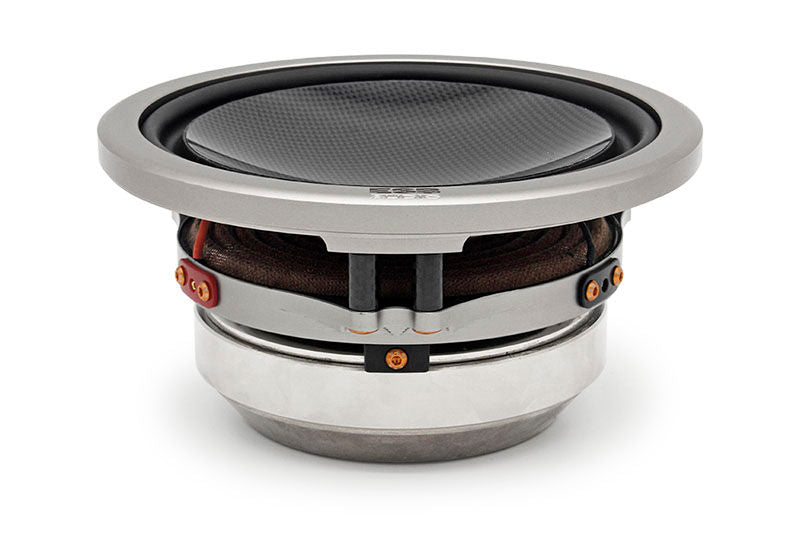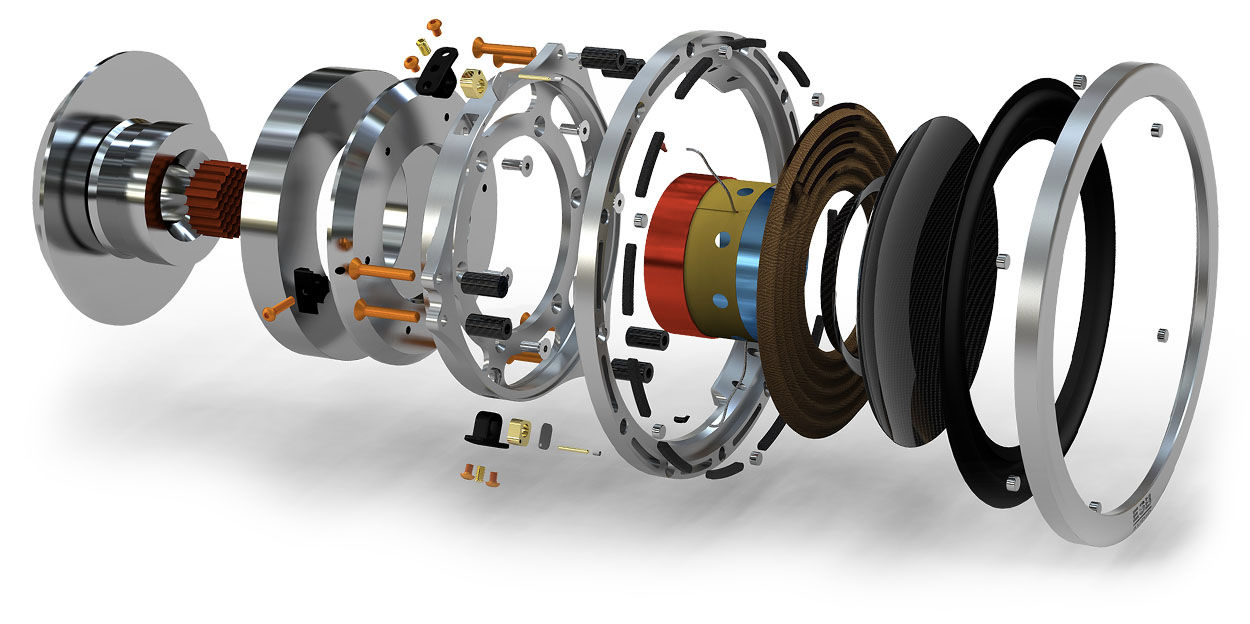ESB
ESB 10.W 10.6K3 6.5”/165 mm High-End Mid-Woofer
ESB 10.W 10.6K3 6.5”/165 mm High-End Mid-Woofer
The 10.W woofer diaphragm is the first in the world that uses a double carbon fiber skin made with pure carbon nanotubes. The choice of a double skin crossed at 45° means that the distribution of the stresses along the axis of the nanotubes always occurs along their normal direction, thus creating a membrane that is extremely very light but has a rigidity and non-deformability never seen in any other speaker in the world.
The entire hemispherical membrane is made in a single piece, without the use of the classic dust cover. This method, combined with the gluing of the suspension on the rear face and the extension of the diaphragm well beyond the point of union with the
suspension, prevents the classic discontinuities that exist in any other woofer, ensuring absolutely neutral and faithful sound reproduction.
The stiffness of the cone, much higher than that of many metals, combined with an excellent internal damping guarantees the perfect "piston" effect, where the performance does not vary with the frequency, minimizing the deformations caused by internal vibrations. The playback speed at transients is astounding and hard to match. A carbon ring couples the moving coil with the membrane, and its particular shape ensures a large contact area both on the coil side and on the cone side. This guarantees a perfect energy transfer from the coil to the cone with no loss and above all, no concentration of effort. Normally this important point of contact where all the energy released by the voice coil passes to the cone is made with a simple glue ring. This does not guarantee a constant reproducible with precision, but mainly due to its small size, it concentrates all the effort in a small area, causing stress to the parts resulting in deformation and distortion.
Resonances in the body of a musical instrument are an essential part of defining its nature and quality. For a speaker, the exact opposite is true. Speaker basket resonances are a significant cause of sound coloration. ESB's R&D department has devoted a great deal to developing materials and shapes to balance the mass, stiffness and damping of the ideal basket.
The result was obtained with a mix of aluminum and carbon fiber. The use of aluminum alone, while having excellent characteristics, such as extreme rigidity, has the negative characteristic of not being particularly damped. Our design, which combines two aluminum plates for aerospace use (Avional) with high thickness carbon fiber couplers making the baskets virtually inert. These have no discernible coloring, allowing the speakers to operate with maximum clarity and dynamics. Although expensive to implement, the use of aluminum in our speakers plays a fundamental role in our design philosophy.
A look inside
The robust MW-1 motor which includes the large titanium voice coil, and a neodymium magnet, reduces distortion levels to a fraction of those found in even the best alternatives available on the market. A copper sleeve encapsulates the entire distance of the voice coil, decreasing the inductance to about 1/10 of its original value. This feature substantially reduces driver non-linearity and intermodulation distortion by increasing its overload handling capability.
In the development of the 10000 series loudspeakers, a colossal effort was made to minimize eddy currents in the iron parts of the engine and suspension system. Eddy currents are created by the movement of the moving coil and produce a chaotic magnetic field that works "against" the fixed magnetic field, thus creating distortions. The best way to reduce these currents is to saturate the metal parts of the motor as much as possible. When the metal around the coil is completely saturated, induced bending (i.e. eddy currents) cannot develop. To do this requires very advanced design studies, precision machining of parts and huge magnets.
Ventilation system
A ventilation hole in the central part of the magnet ensures both a correct heat exchange between the coil and the external air, and the reduction of pressure under the woofer membrane. Although it looks simple, this hole required a great deal of aerodynamics to create its ideal double opposed cone shape in order to reduce the
turbulence that could cause unwanted noise. But in addition to this, a flow laminator has been inserted inside it which further reduces turbulence by aligning the fluid threads in an orderly and non-causal and turbulent way.
Share
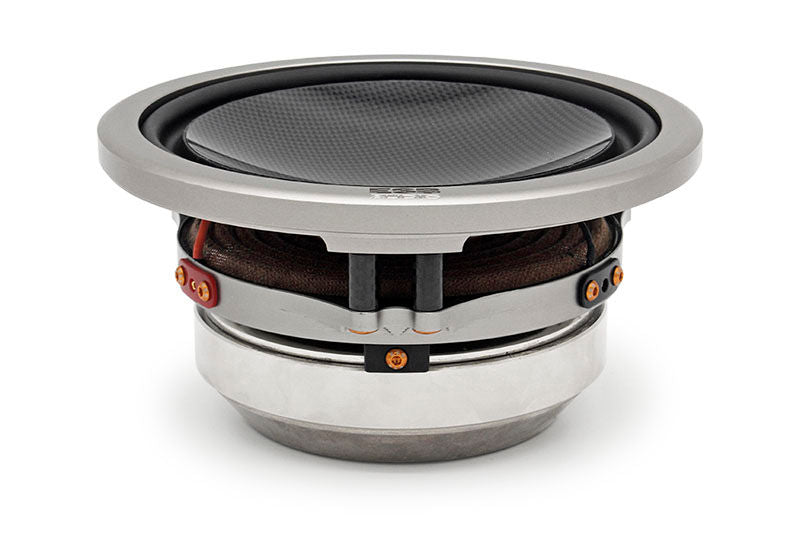
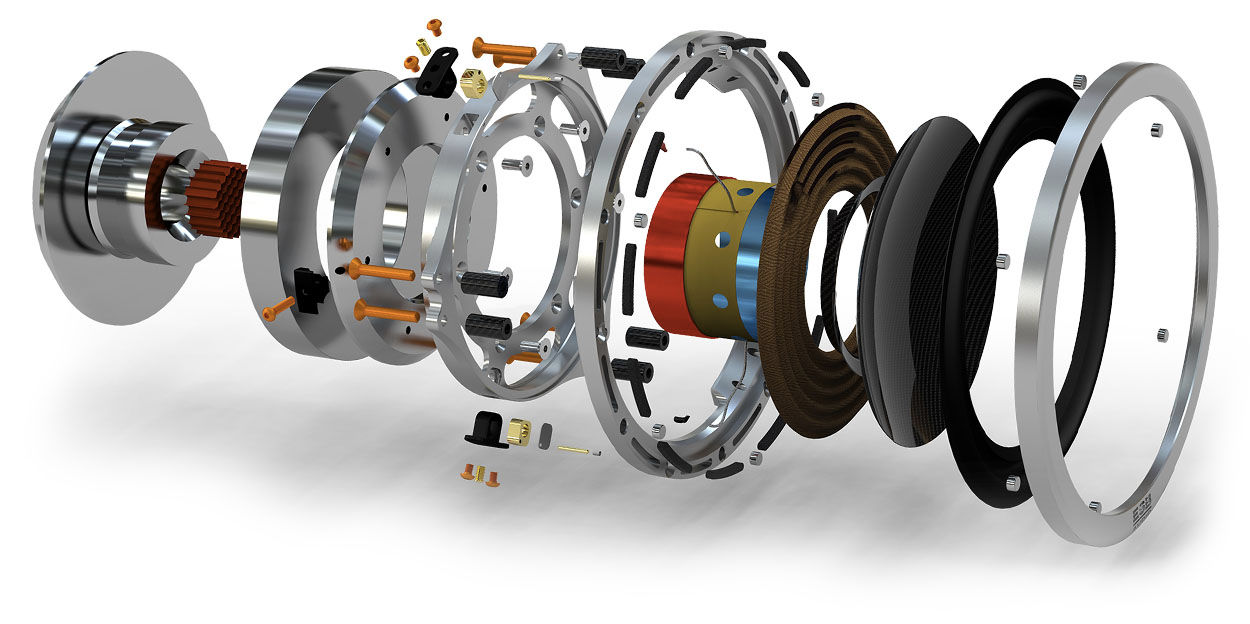
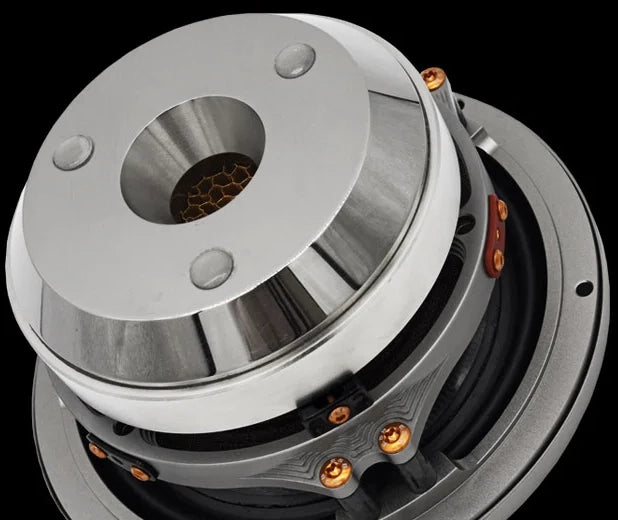
-
Features
-
Specifications
